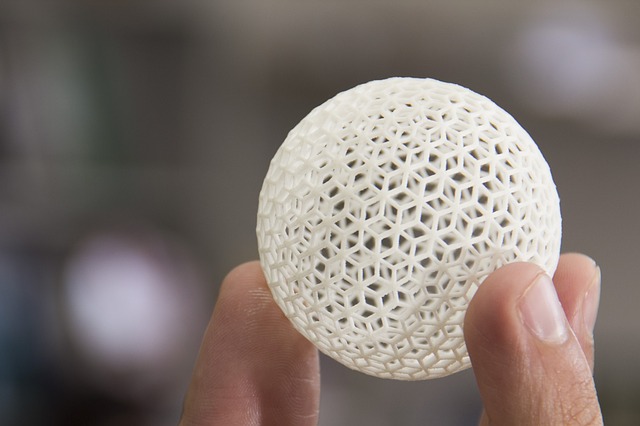The modern entrepreneur has access to more manufacturing technologies than ever before. Additive manufacturing, subtractive manufacturing, molding, casting, machining — the list of terms can seem daunting! While this diversity in choices allows for greater flexibility and design potential, it can also lead to analysis paralysis: the curse of too many options. How is one supposed to choose?
Unfortunately, there is no straightforward answer. The best manufacturing method will depend entirely on the needs of your project. Different technologies have their own strengths and weaknesses. Part of the product development process is to determine the type of manufacturing that best addresses the needs of your design.
Costs, Lead Times, Geometries, and Materials
One of the first things entrepreneurs will often look at when comparing manufacturing methods is their relative costs. While it’s important to consider your manufacturing budget carefully, a purely cost-based comparison can be a misleading approach to settling on a manufacturing technology.
There are a few reasons for this. For starters, the cheapest way might not be the best, and it might not even be appropriate for your project at all. Second, there isn’t always a straightforward way to evaluat the costs of different methods. Injection molding, for example, will be cheaper than 3D printing for high volume production of a simple part like a bracket or a hinge. But with complicated parts with more sophisticated geometries, the cost of injection molding can be higher additive manufacturing technologies even for high volume production.
Another thing to consider is lead times, or the time it takes to complete a production run. Again, though, this will depend entirely on the specifics of your product design. Generally speaking, subtractive techniques like machining or molding can produce units more quickly than additive 3D printing. But, then again, molding and machining involve customized tooling and calibration which isn’t necessary for additive manufacturing. The relative lead times of different technologies will change depending on the quantity — 3D printing is very fast for making a few units, but much slower than molding and casting when it comes to producing tens of thousands of parts.
The best way to determine what manufacturing technology is right for your project is to consider the materials you need your product to be made from, the mechanical requirements of your product, and the shape or geometry of your design. The mechanical requirements of your product are the number one factor that should direct your choice in manufacturing.
3D Printing and Additive Manufacturing
3D printing, otherwise known as additive manufacturing, is a relatively new and exciting category of manufacturing technologies. There are numerous different types of additive manufacturing, but what they all have in common is an approach to manufacturing which involves building up a part layer by layer. The thickness of these layers varies depending on the machine used and the requirements of the project, but they can be as thin as 16 microns.
As the name suggests, 3D printing is actually quite similar to regular old 2D printing. However, instead of simply laying a layer of ink onto a surface, 3D printers add layer upon layer of material, adding new layers over the layers that have just been printed, to gradually produce the three-dimensional part.
3D printing has a number of advantages, and different 3D printing technologies have their own strengths and weaknesses. One of the most notable advantage 3D printing has over conventional manufacturing methods is the capacity to easily create objects with highly complex geometries and hollow spaces.
Additive manufacturing doesn’t use casts, nor does it rely on “subtracting” material from a pre-existing block, as in molding and machining respectively. Freed from these limitations, a 3D printer can create objects with complicated internal and external shapes just as easily as it could create a simple part. In fact, in contrast with conventional methods, 3D printing can actually be cheaper for more complex parts with lots of empty space than for simpler solid parts, since there is less material involved.

3D printing technology is always advancing, and there are now more options available in terms of materials and methods than ever before. It’s not just for model making and sculptures anymore — real functional parts can now be fully printed.
Technologies like Fused Deposition Modeling (FDM) and Direct Metal Laser Sintering (DMLS) allow for parts to be printed using durable thermoplastics and metals that are comparable to those used in conventional manufacturing. The innovative aerospace company SpaceX has even designed an actual rocket engine — the SuperDraco — that is completely 3D printed.
3D printers are very good at creating negative space. For example, an extremely fine and intricate lattice would be difficult to create using subtractive methods, where material has to be cut away from an existing block from the outside. But in additive manufacturing, where parts are assembled by the gradual buildup of layers a few thousandths of an inch thick, the hollow spaces are built right into the object from the ground up. This opens up a whole new world of design possibilities.
Advantages of Additive Manufacturing/3D Printing
- Complex assemblies can be reduced to a single 3D printed part, which can improve structural stability and opens up new design potential not easily realizable through conventional manufacturing.
- No need for tooling. This often makes 3D printing a more cost effective and desirable option for smaller production volumes.
- Complex and sophisticated geometries and shapes can be easily printed that might be impossible or prohibitively expensive to produce through machining or molding.
- A wide range of metal, plastic, rubberized, and polymer materials are available.
- Depending upon the type of 3D printer, extremely detailed and accurate parts can be produced straight from the printer, with minimal need for post-production surface finishing.
- Generally speaking, lower cost and lead-times for low-volume production runs, compared with conventional (subtractive) manufacturing.
- Additive manufacturing is well suited for prototyping, as functional parts can be rapidly produced in low volumes
Different Additive Manufacturing Technologies Available
- PolyJet/Z-Corp
- Fused Deposition Modeling (FDM)
- Selective Laser Sintering (SLS)
- Direct Metal Laser Sintering (DMLS)
- Stereolithography (SLA)
CNC Machining
CNC machining is an automated rapid manufacturing technology that is subtractive rather than additive. CNC stands for ‘computer numerical control’, which refers to the fact that the machines are automated using computer aided design (CAD).
Much like 3D printing, CNC machines are able to use detailed CAD files to create highly accurate and functional parts from a wide range of materials. They are otherwise very different techniques, though. While a CNC machine is a highly sophisticated piece of technology, the actual approach to manufacturing which they embody is as old as human civilization. That approach is basically to start with a hunk of material and to cut, rout, and chip away at it until you arrive at the desired shape.
Modern CNC machines are remarkable in that they often combine a whole array of tools into a single piece of equipment: saws, drills, routers, etc. There are CNC mills and CNC lathes which operate much like the mills and lathes of centuries past, but fully automated with the use of computers to achieve unparalleled accuracy in a fraction of the time.
A major advantage that CNC holds over additive manufacturing is the almost limitless array of materials available. Pretty much any material that can be used in production can be used in CNC manufacturing. Virtually any engineering material can be used, and production runs can be accomplished much, much faster than in conventional manufacturing.
Advantages of CNC Machining
- Great for creating durable, highly detailed master patterns for casting
- Extremely detailed production with very low lead times makes CNC ideal for functional prototyping
- Ideal for projects with high tolerance requirements and strict specifications
- Can handle both large and small parts
- Can be used to create parts from almost any material: from wood to foam to steel and brass.
Injection Molding and Casting
Injection molding is a very common manufacturing technique which works by injecting liquefied materials into a mold. While there is a whole range of materials available including metals, glasses and elastomers, most injection molding is done using various thermoplastics. the standard manufacturing process for much of the mass-produced items on the market. Once your molds have been created (or tooled), they can be used to create thousands of units. Injection molding can also create parts that are stronger and more durable than 3D printing.
Injection molding is the standard manufacturing process for much of the mass-produced items on the market today. Once your molds have been created (or tooled), they can be used to create thousands of units. Injection molding can also create parts that are stronger and more durable than 3D printing.
The challenges with molding and casting have to do with the actual molds themselves. The process works by injection material into a mold, which is then separated to reveal the finished part. This imposes significant design constraints. The other challenge with molding is that, before any of the desired parts can be produced, the molds themselves have to be created. This requires a bit more front-end investment and production time than additive manufacturing or CNC machining (which, incidentally, are technologies often used to create molds for casting).
The other challenge with molding is that, before any of the desired parts can be produced, the molds themselves have to be created. This requires a bit more front-end investment and production time than additive manufacturing or CNC machining (which, incidentally, are technologies often used to create the molds for casting).
The initial cost of tooling is offset for high-volume production runs as the molds can be reused to create many thousands of units. For most projects, injection molding is more expensive than other technologies in low volumes but tends to become much more cost effective with higher production runs. Most plastic parts today are created by injection molding.
Advantages of Injection Molding
- Generally the most cost-effective technology for high-volume production runs
- Reliable for creating high volumes of parts to the exact same specification
- Wide range of materials available
- Can produce highly durable parts with high tolerance specifications
At the end of the day, there is no single right answer for what the best manufacturing method will be for your product. The answer will always depend on the highly specific requirements of your design project.
Different manufacturing technologies are also often employed within one single product development cycle. For example, you may take advantage of 3D printing to create functional prototypes, and then use CNC machining to create the molds you use for mass-producing the final product.
The materials you need to use, the volumes you want to produce in, and the mechanical requirements and tolerances of your project will all determine for you what manufacturing method is most appropriate for your product.
Whatever your project, Cad Crowd is ready to help. We offer a range of manufacturing services for entrepreneurs and product developers. Our top-tier network includes industrial designers who can help you optimized your design for manufacturing. Whether you’re in the prototyping or the design phase, or if you’re ready to start production, we’ve got you covered! Get a free quote today, and let us know how we can help you.

